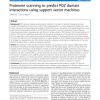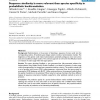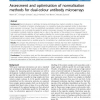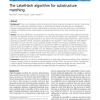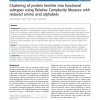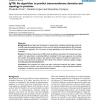BMCBI
2010
13 years 5 months ago
2010
Background: PDZ domains mediate protein-protein interactions involved in important biological processes through the recognition of short linear motifs in their target proteins. Tw...
BMCBI
2007
13 years 5 months ago
2007
Background: Backtranslation is the process of decoding a sequence of amino acids into the corresponding codons. All synthetic gene design systems include a backtranslation module....
BMCBI
2007
13 years 5 months ago
2007
Background: Structural genomics initiatives were established with the aim of solving protein structures on a large-scale. For many initiatives, such as the Protein Structure Initi...
BMCBI
2008
2008
Predicting the Interactome of Xanthomonas oryzae pathovar oryzae for target selection and DB service
13 years 5 months ago
Background: Protein-protein interactions (PPIs) play key roles in various cellular functions. In addition, some critical inter-species interactions such as host-pathogen interacti...
BMCBI
2010
13 years 5 months ago
2010
Background: Recent advances in antibody microarray technology have made it possible to measure the expression of hundreds of proteins simultaneously in a competitive dual-colour a...
BMCBI
2010
13 years 5 months ago
2010
Background: There is an increasing number of proteins with known structure but unknown function. Determining their function would have a significant impact on understanding diseas...
BMCBI
2007
13 years 5 months ago
2007
Background: Detecting groups of functionally related proteins from their amino acid sequence alone has been a long-standing challenge in computational genome research. Several clu...
BMCBI
2010
13 years 5 months ago
2010
Background: Phylogenetic analysis can be used to divide a protein family into subfamilies in the absence of experimental information. Most phylogenetic analysis methods utilize mu...
BMCBI
2008
13 years 5 months ago
2008
Background: Due to their role of receptors or transporters, membrane proteins play a key role in many important biological functions. In our work we used Grammatical Inference (GI...
BMCBI
2008
2008
Modifying the DPClus algorithm for identifying protein complexes based on new topological structures
13 years 5 months ago
Background: Identification of protein complexes is crucial for understanding principles of cellular organization and functions. As the size of protein-protein interaction set incr...
